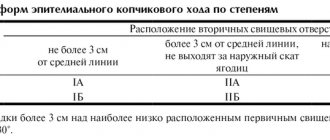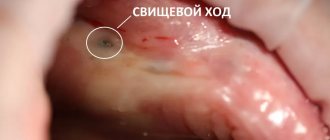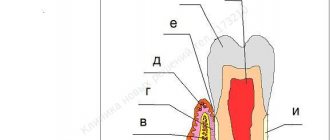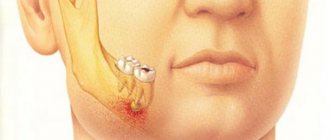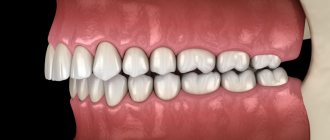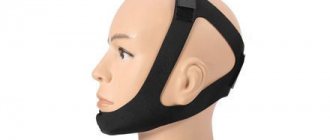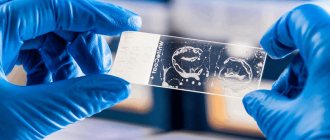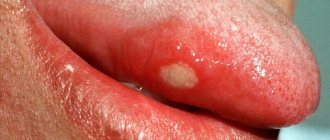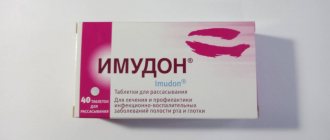Author of the article:
Soldatova Lyudmila Nikolaevna
Candidate of Medical Sciences, Professor of the Department of Clinical Dentistry of the St. Petersburg Medical and Social Institute, Chief Physician of the Alfa-Dent Dental Clinic, St. Petersburg
Inflammation of the periosteum (periostitis) is a disease that brings many painful symptoms. As a rule, acute pain and severe swelling immediately bring the patient to the dentist, and rightly so: not only the condition of the oral cavity, but also health in general depends on the timeliness of treatment.
Typical symptoms
Symptoms of inflammation of the periosteum of the tooth are quite pronounced:
- redness and swelling of the gums;
- increasing severe pain radiating to the ear, temple and other areas, depending on the location of the inflammation;
- swelling of the face on one side (cheeks, lips, cheekbones);
- high body temperature;
- symptoms of general intoxication (headache, dizziness, dry mouth, fatigue and weakness, general loss of strength);
- white or gray plaque on the gums;
- change in tooth position, tooth mobility;
- in some cases, the appearance of purulent discharge.
With a prolonged inflammatory process, a fistula can form: pus finds its way into the oral cavity, which is accompanied by the appearance of blood, but the pain and fever temporarily subside. This is due to the fact that the contents stop accumulating in the tissues and begin to flow out, but you should definitely consult a doctor.
Possible complications and diagnosis
If the disease is not treated properly, very serious complications soon develop: osteomyelitis (purulent inflammation of bone tissue, provoking its necrosis), phlegmon (a diffuse purulent process that affects nearby tissues and requires immediate surgical intervention), sepsis (a general infection of the body, often ending in the death of the patient ). Each of these conditions requires emergency medical care and long, painstaking treatment. Therefore, it is better not to let the situation lead to complications and contact a dentist at the first signs of an inflammatory process.
To establish an accurate diagnosis, the doctor will need to conduct a differential diagnosis using instrumental diagnostic methods (radiography, CT). This disease is similar in symptoms to acute periodontitis, acute inflammation of the salivary glands, lymphadenitis, and osteomyelitis. Therefore, in order to prescribe adequate treatment, it will be necessary to exclude these conditions and accurately determine the cause of the patient’s poor health.
Why does inflammation of the periosteum occur?
There are three ways that pathogenic bacteria enter the periosteum:
- odontogenic factor - dental diseases become the source of inflammation: caries, cysts and granulomas of the tooth root, pulpitis. Bacteria penetrate deep into soft tissues. Quite often, periostitis is observed as a result of a long and complicated process of eruption of “eights”;
- hematogenous factor - infection occurs as a result of bacteria entering the tissues from the bloodstream or lymph flow. As a rule, this happens in connection with ENT diseases, furunculosis of the face, neck, abscesses, etc.;
- traumatic factor - mechanical damage to the periosteum during fractures, impacts, complex tooth extractions leads to inflammation.
Causes
Without provoking factors, periostitis does not develop in children. The main cause of pathology is the lack of timely treatment of dental diseases. According to statistics, periostitis in children with baby teeth occurs in 30% of cases of dental disease. This is explained by the fact that parents are of the opinion that there is no need to treat temporary teeth, since they will change anyway.
The main causes of periostitis:
- deep caries;
- chronic or acute periodontitis;
- periodontal damage;
- gingivitis;
- improper oral hygiene;
- teething disorders;
- injury to the jaw, tooth or gum;
- perforation of dental tissue during treatment.
Periostitis can also develop if an infection penetrates, if there is a mechanical injury to the gums, tooth or jaw. In rare cases, pathology occurs due to the fault of the dentist during perforation as a result of treatment.
Types of inflammation
Symptoms of inflammation of the periosteum of the tooth depend on the form of the process. In the acute form, pain and swelling are severe, difficulty swallowing, spreading of swelling to the face and neck, and enlarged lymph nodes may be observed. Acute inflammation occurs over several days.
The chronic form may bother the patient for several months. Symptoms are more moderate; a fistula may appear - an opening through which inflamed tissues get rid of purulent contents.
There are also two types of both acute and chronic inflammation:
- serous - more often provoked by traumatic injury, swelling forms quickly, but the pain is more moderate and tolerable, relief occurs, on average, after 5 days;
- purulent - more dangerous, characterized by severe throbbing pain, severe swelling and redness of soft tissues, and higher body temperature.
In both cases, you should definitely consult a doctor, since the risk of complications is very high.
Classification of acute periostitis
In the classification of acute periostitis, the following points should be highlighted. These are the causes of acute periostitis:
- odontogenic periostitis;
- lymphatic periostitis;
- hematogenous periostitis;
- traumatic periostitis;
Course of acute periostitis:
- serous periostitis of the jaws;
- purulent periostitis of the jaws.
Process distribution:
- limited periostitis of the jaws;
- diffuse periostitis of the jaws.
Features of treatment
Treatment of inflammation of the periosteum of the tooth should only be carried out by a doctor. The specialist chooses tactics depending on the type and form of the disease.
Drug treatment is only advisable if you consult a doctor immediately at the first symptoms of the disease. Therapy includes:
- taking antibiotics prescribed by a specialist: this will stop inflammation and prevent the spread of infection;
- taking anti-inflammatory drugs, painkillers;
- local effect: use of antiseptic rinses, chlorhexidine baths, ointments and gels with an anti-inflammatory effect.
The course of treatment is at least 5-7 days. If relief does not occur, surgical methods are used.
Symptoms and treatment of inflammation of the periosteum of the tooth are individual. In case of advanced inflammation, ineffectiveness of conservative methods and other indications, the doctor performs a tissue opening - periostotomy. It is carried out in several stages:
- anesthesia: local infiltration or conduction anesthesia is sufficient.
- Making an incision in the gum in the projection of the source of inflammation.
- Washing and cleaning tissues.
- Treatment of the wound with antiseptic agents.
- Installation of drainage - a small rubber band in order to prevent premature fusion of the mucous membrane and the re-formation of pus inside.
The drainage is removed by a doctor after a few days; you should not do this yourself. The specialist must make sure that the contents of the inflamed tissue are released and the wound can be allowed to heal. If the incision is small, no stitches will be required.
If the cause of the disease was a damaged tooth, it is treated: restoring its shape using filling materials, filling root canals. Sometimes removal is required; it is performed simultaneously with surgical treatment of periostitis.
Additionally, physiotherapeutic procedures may be recommended. They will speed up inflammation relief and healing. These include UHF, darsonval therapy, infrared radiation, and magnetic therapy. During the healing period, it is advisable to use vitamins and restorative medications.
Prevention
Periostitis in children is a dangerous pathology that can lead to the most severe consequences. It is not difficult to prevent the disease even in its chronic form.
Parents should take a responsible approach to dental health by regularly visiting the dentist’s office with their child for preventive purposes and seeking help at the first pathological signs.
Periostitis does not go away on its own. Self-medication is also not effective, since it is impossible to cope with the purulent process occurring inside the tissues without removing the pus. Periostitis in children at any age requires urgent professional dental care. Timely consultation with a doctor will avoid long and complex treatment, as well as life-threatening complications.
How to help yourself before visiting a doctor
If the periosteum of the jaw is inflamed, you should forget about such traditional methods as heating: any hot compresses will aggravate the situation. If you open the formation, take antibiotics without a doctor’s prescription, or remove the pus yourself, this can lead to dire consequences.
You can alleviate your condition by doing the following:
- rinse your mouth with a weak saline solution at room temperature or an antiseptic with an analgesic effect;
- apply a cool compress to the cheek on the side of the inflammation;
- Take an over-the-counter pain reliever.
These measures will help relieve pain and slightly reduce swelling, but you should contact a specialist as soon as possible. As an antiseptic rinse, you can use ACTIVE mouthwash. It does not contain alcohol, so there is no risk of burning inflamed tissues, and the chlorhexidine and benzydamine in the composition will help relieve the condition before you see a doctor.
What is periostitis and how does it manifest in children?
The disease is usually a consequence of advanced dental problems, when inflammation descends, spreading to the bone. In children, this process can happen very quickly - sometimes the hours count.
In everyday life, periostitis of the jaw is called gumboil
. It is usually acute in nature and manifests itself with the following symptoms:
- complaints of jaw pain;
- asymmetrical swelling, puffy cheek;
- enlarged lymph nodes in this area;
- increase in general body temperature;
- weakness of the child, signs of general intoxication.
Please note that with periostitis, cooling the inflamed area reduces pain, and heating
increases discomfort.
Look at photos of children with periostitis - you will notice that the face is asymmetrical, the cheek or cheekbone area is swollen and looks painful.
The symptoms listed above (one or more) should be a guide to immediate action - it is necessary to urgently take the child to the dentist. It should be noted that in this case a prior appointment is not required - at the municipal clinic you will be seen immediately with a note of “acute pain”.
Clinical researches
Repeated clinical studies have proven that the two-component mouth rinse ASEPTA ACTIVE more effectively combats the causes of inflammation and bleeding compared to single-component rinses - it reduces inflammation by 41% and reduces bleeding gums by 43%.
Sources:
- The role of anti-inflammatory rinse in the treatment of periodontal diseases (L.Yu. Orekhova, A.A. Leontyev, S.B. Ulitovsky) L.Yu. OREKHOVA, Doctor of Medical Sciences, Prof., Head of Department; A.A. LEONTIEV, dentist; S.B. ULITOVSKY, Doctor of Medical Sciences, Prof. Department of Therapeutic Dentistry of St. Petersburg State Medical University named after. acad. I. P. Pavlova
- The use of drugs from the Asepta line in the complex treatment of inflammatory periodontal diseases (N.V. Berezina E.N. Silantyeva S.M. Krivonos, Kazan State Medical Academy. Kazan.) N.V. BEREZINA, E.N. SILANTIEVA, S.M. KRIVONOS Kazan State Medical Academy
- Report on determining/confirming the preventive properties of commercially produced personal oral hygiene products: Asepta toothpaste used in combination with Asepta mouthwash and Asepta gum balm Head. Department of PFS Doctor of Medical Sciences Professor S.B. Ulitovsky St. Petersburg State Medical University named after Academician I.P. Pavlova. Faculty of Dentistry. Department of Preventive Dentistry.
Methods of pain relief
The surgical procedure is performed under local anesthesia. Before performing the manipulation on the upper jaw, bilateral anesthesia is administered by infiltration. This anesthesia involves administering the drug to both sides of the jaw.
To perform intervention on the mobile jaw, torus or mandibular anesthesia is used. The anesthetic is injected into the area of the mandibular ridge.
Reference! With extensive foci of inflammation, the effectiveness of pain relief decreases. In this regard, it is recommended to administer potent anesthetics.
Historical reference
Tooth abscess, “tooth fire” - these are just some of the “folk” names for this disease that have come down to us from antiquity. In those days, a patient who came to a doctor with a gumboil, in the overwhelming majority of cases, left him... without a tooth, because the removal of the causative tooth seemed to be the only reliable “remedy” for all dental diseases. However, it is impossible not to mention the existing artifacts - the found skulls dating back to the time of the Old Kingdom, with traces of drilling in the jaw, in all likelihood to release pus - proving that even in those days attempts were made not to get rid of diseased teeth, but to treat them1.
But since medicine in those days was an “expensive pleasure,” people looked for ways to help themselves on their own, and traditional medicine always came to their aid. For example, in the treatment of gumboil, ground garlic was used as the most powerful natural antibiotic. Clove oil, peppermint oil and oregano oil, which have analgesic, bactericidal, and antiseptic properties, were widely used, as were warm salt water, apple cider vinegar, sesame seeds, herbal rinses, and even raw potatoes. Among the more “modern” folk remedies, rinsing with hydrogen peroxide and baking soda is known. Of course, all these “medicines” had extremely low effectiveness, in many cases they were simply useless, and in some cases they were dangerous, since they took up precious time, during which the active inflammatory process led to sepsis. And only at the end of the 19th and beginning of the 20th centuries, when medical science began to develop steadily and rapidly, did doctors have truly effective means of combating periostitis.
Price
Since periostitis and its complications can be life-threatening, in public medical institutions and in some commercial clinics assistance to patients with this diagnosis is provided free of charge under the compulsory medical insurance policy. But most private clinics are not included in the compulsory medical insurance program. In each specific case, periostitis requires a strictly individual approach, and the cost of treatment depends on the following factors and their combination: the diagnostic examination performed (OPTG, X-ray, in some cases - CT scan, examination); treatment algorithm (developed on the basis of the diagnosis, stage of the disease, characteristics of its course), methods, materials, drugs, tools and equipment used in treatment; additional physiotherapeutic procedures (if prescribed); consultations with narrow specialists (if necessary); qualification of the attending physician.
Periostitis is a dangerous infectious disease of the oral cavity. When its symptoms appear, it is extremely important to seek professional medical help as soon as possible, because periostitis of the jaw not only causes severe pain, but also poses a serious threat to the entire body, causing complications of varying severity, including blood poisoning. Timely, qualified treatment in a dental clinic is a guarantee of eliminating the existing pathology and, in many cases, saving the causative tooth.
According to antiplagiat.ru, the uniqueness of the text as of October 16, 2018 is 100%.
Key words, tags: tooth-preserving operations, bone grafting, orthopantomography, tooth extraction, dental cyst.
1 I. Zimin. "From the history of healing." 2 Great Medical Encyclopedia (Electronic reference book on human anatomy, www.spravochnik-anatomia.ru). 3 Shargorodsky A.G. Inflammatory diseases of the tissues of the maxillofacial area and neck. 2001. 4 https://mkb-10.com 5 “Surgical dentistry” edited by Robustova T.G. Fourth edition. Moscow "Medicine" 2010; https://rcmfs.ru/%D0%BF%D0%BE%D0%BB%D0%B8%D0%BA%D0%BB%D0%B8%D0%BD%D0%B8%D0%BA%D0 %B0/%D0%BB%D0%B5%D1%87%D0%B5%D0%BD%D0%B8%D0%B5%D0%BF%D0%B5%D1%80%D0%B8%D0% BE%D1%81%D1%82%D0%B8%D1%82%D0%B0.html

